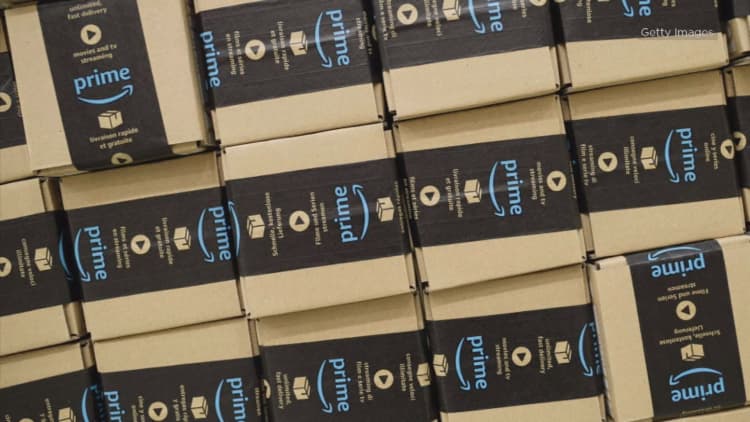
Prime growth is plateauing in the U.S., showing the first signs of a slowdown in its oldest market, Morgan Stanley wrote in a note published this week.
Prime, a paid membership program that gives free two-day shipping and access to other perks such as online video and music, is important for Amazon because Prime members tend to spend more on its e-commerce site. Amazon calls Prime one of the three pillars of its business, alongside the Amazon Marketplace, its site connecting buyers and sellers, and Amazon Web Services, its cloud computing business.
Based on a survey of 1,000 U.S. adults in the third quarter of 2017, Morgan Stanley concluded that 40 percent of American consumers are currently Prime members — the same percentage seen in its survey from the fourth quarter of 2016.
"These data are the first evidence of potential Prime penetration limits in Amazon's oldest market," Morgan Stanley wrote in the note.
Amazon doesn't disclose the size of Prime or a breakdown of its demographics. Instead, the company shares revenue from "subscription services," which includes Prime in the U.S. and overseas, as well as content subscriptions for things such as e-books and music. In the third quarter, subscription revenue grew 59 percent from a year ago, to $2.4 billion.
The slowdown in the U.S. comes partly because membership to the program is nearing saturation in the higher-income market. Another survey by Piper Jaffray in June said that 82 percent of U.S. households with over $112,000 in income are already Prime members.
Morgan Stanley said this means it's important for Amazon to expand Prime to the lower-income and older households — both segments that have historically had lower Prime penetration rates. To go after the lower-income market, Amazon has recently launched monthly payment plans and special discounts for people receiving government assistance. As Amazon increases its offerings related to health care, that would help it target older consumers, the note said.


